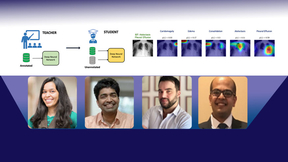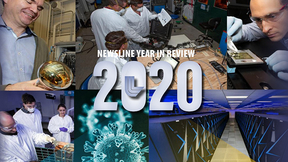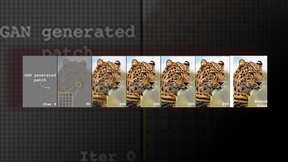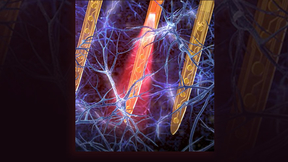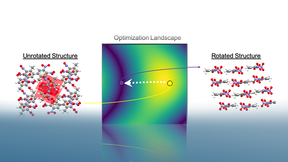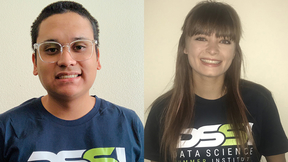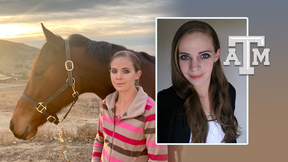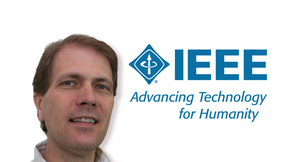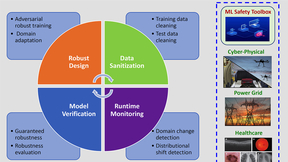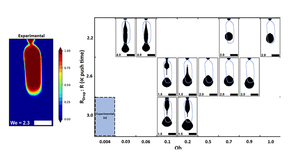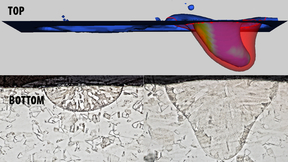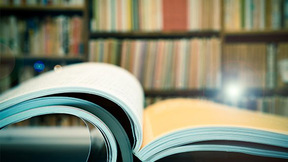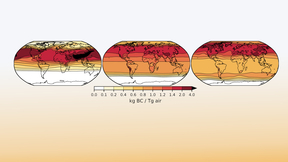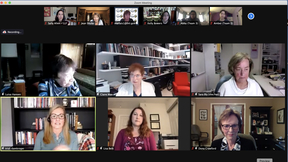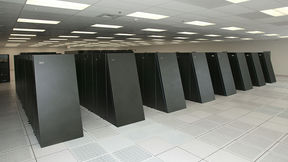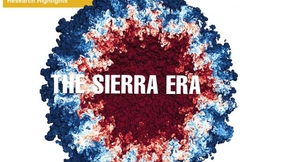Back
New work by computer scientists at Lawrence Livermore National Laboratory (LLNL) and IBM Research on deep learning models to accurately diagnose diseases from X-ray images with less labeled data won the Best Paper award for Computer-Aided Diagnosis at the SPIE Medical Imaging Conference on Feb. 19. The technique, which includes novel regularization and “self-training”…
Nearly a year into piloting a major scientific institution through one of the most taxing and disruptive global events in modern history, outgoing Livermore Lab Director Bill Goldstein is ready for a vacation. One of Goldstein’s first orders of business following his retirement on March 1 is returning to the lush slopes, coffee plantations and sandy beaches of Kona, Hawaii…
Lawrence Livermore National Laboratory (LLNL) computer scientists have developed a new deep learning approach to designing emulators for scientific processes that is more accurate and efficient than existing methods. In a paper published by Nature Communications, an LLNL team describes a “Learn-by-Calibrating” (LbC) method for creating powerful scientific emulators that…
Kim Budil has been named director of Lawrence Livermore National Laboratory (LLNL). Charlene Zettel, chair of Lawrence Livermore National Security, LLC (LLNS), which manages the Laboratory for the Department of Energy's (DOE) National Nuclear Security Administration (NNSA), made the announcement to Laboratory employees Jan. 28. Budil will begin her new role on March 2…
Though 2020 was dominated by events surrounding the COVID-19 pandemic — whether it was adapting to social distancing and the need to telecommute, safeguarding employees as they returned to conduct mission-essential work or engaging in COVID-related research — Lawrence Livermore National Laboratory (LLNL) managed an exceptional year in all facets of science and technology…
The 2021 IEEE Winter Conference on Applications of Computer Vision (WACV 2021) on Wednesday announced that a paper co-authored by a Lawrence Livermore National Laboratory (LLNL) computer scientist received the conference’s Best Paper Honorable Mention award based on its potential impact to the field. The paper, titled "Generative Patch Priors for Practical Compressive…
Combining hybrid polymer materials with microfabrication and 3D printing, Lawrence Livermore National Laboratory (LLNL) has developed an ultra-compact, lightweight and minimally invasive optoelectronic neural implant that could be used for long-term studies of brain activity. The new implantable devices are built upon a new platform LLNL researchers are calling POEMS …
Whether organic chemists are working on developing new molecular energetics or creating new blockbuster drugs in the pharmaceutical industry, each is searching how to optimize the chemical structure of a molecule to attain desired target properties. Part of that optimization includes a molecular crystal’s packing motif, a perceived pattern in how molecules orient relative…
Lawrence Livermore National Laboratory (LLNL) scientists and engineers have put together another first-rate year securing major grants through the Department of Energy’s (DOE) Technology Commercialization Fund (TCF). “We did quite well, although the diversity of the research projects funded wasn’t as broad as last year,” said Rich Rankin, the director of the Lab’s…
Early this spring, the Livermore Lab Foundation (LLF), in partnership with University of California, Merced, awarded two rising seniors, Jose Garcia-Esparza and Teagan Zuniga, one-year $15,000 fellowships to participate in the Lab’s Data Science Summer Institute (DSSI) and continue a part-time fellowship at the Lab for the remainder of the 2020-21 school year. The…
Texas A&M University’s Department of Nuclear Engineering on Dec. 10 announced it has honored Lawrence Livermore National Laboratory (LLNL) physicist Kelli Humbird with its 2020-21 Young Former Student award for her work at LLNL in combining machine learning with inertial confinement fusion (ICF) research. A design physicist at LLNL, Humbird graduated from Texas A&M…
IEEE, the world's largest technical professional organization, announced it has elevated Bronis de Supinski to the rank of fellow, recognizing Lawrence Livermore National Laboratory's (LLNL) Livermore Computing’s chief technology officer (CTO) for his leadership in the design and use of large-scale computing systems. The prestigious IEEE fellow distinction, which takes…
The 34th Conference on Neural Information Processing Systems (NeurIPS) is featuring two papers advancing the reliability of deep learning for mission-critical applications at Lawrence Livermore National Laboratory (LLNL). The most prestigious machine learning conference in the world, NeurIPS began virtually on Dec. 6. The first paper describes a framework for understanding…
A team of Lawrence Livermore National Laboratory (LLNL) scientists has simulated the droplet ejection process in an emerging metal 3D printing technique called “Liquid Metal Jetting” (LMJ), a critical aspect to the continued advancement of liquid metal printing technologies. In the paper, the team describes the simulating of metal droplets during LMJ, a novel process in…
Lawrence Livermore National Laboratory (LLNL) researchers have taken a promising step in improving the reliability of laser-based metal 3D printing techniques by measuring the emission of electrons from the surface of stainless steel during laser processing. Researchers collected thermionic emission signals from 316L stainless steel under laser powder bed fusion (LPBF)…
Fifty-seven researchers from Lawrence Livermore National Laboratory (LLNL) were among the top 2 percent of the most cited researchers worldwide throughout their careers, according to research on metascience by Stanford University. Metascience is the "study of studies" using scientific methods. Stanford University professor John Loannidis worked alongside U.S.-based Kevin…
A team of Lawrence Livermore National Laboratory (LLNL) researchers has found that the global climatic consequences of a regional nuclear weapons exchange could range from a minimal impact to more significant cooling lasting years. The five LLNL scientists examined the potential for global climate changes from large urban fires ignited in a hypothetical regional nuclear…
Livermore High School freshman Amber Belk is focused on studying chemical engineering in college, but through the Girls Who Code – "Big" program, she gained a new appreciation for how high performance computers that can model the types of molecules she will be studying. “Writing software codes and using the Linux operating system was really fun,” Belk said. "I really…
A team of current and former Lawrence Livermore National Laboratory (LLNL) and IBM scientists won the annual “Test of Time” award at the 2020 Supercomputing Conference on Nov. 19 for a paper outlining LLNL’s Blue Gene/L supercomputer. Published by the Supercomputing Conference in 2002, the paper was the first peer-reviewed overview article to disclose details of Blue Gene…
Lawrence Livermore’s high-performance computing (HPC) facilities house some of the fastest supercomputers in the world, including the flagship Sierra machine. Online for more than a year, Sierra primarily runs simulations for the National Nuclear Security Administration’s (NNSA’s) Advanced Simulation and Computing (ASC) Program. Sierra substantially increases the…

